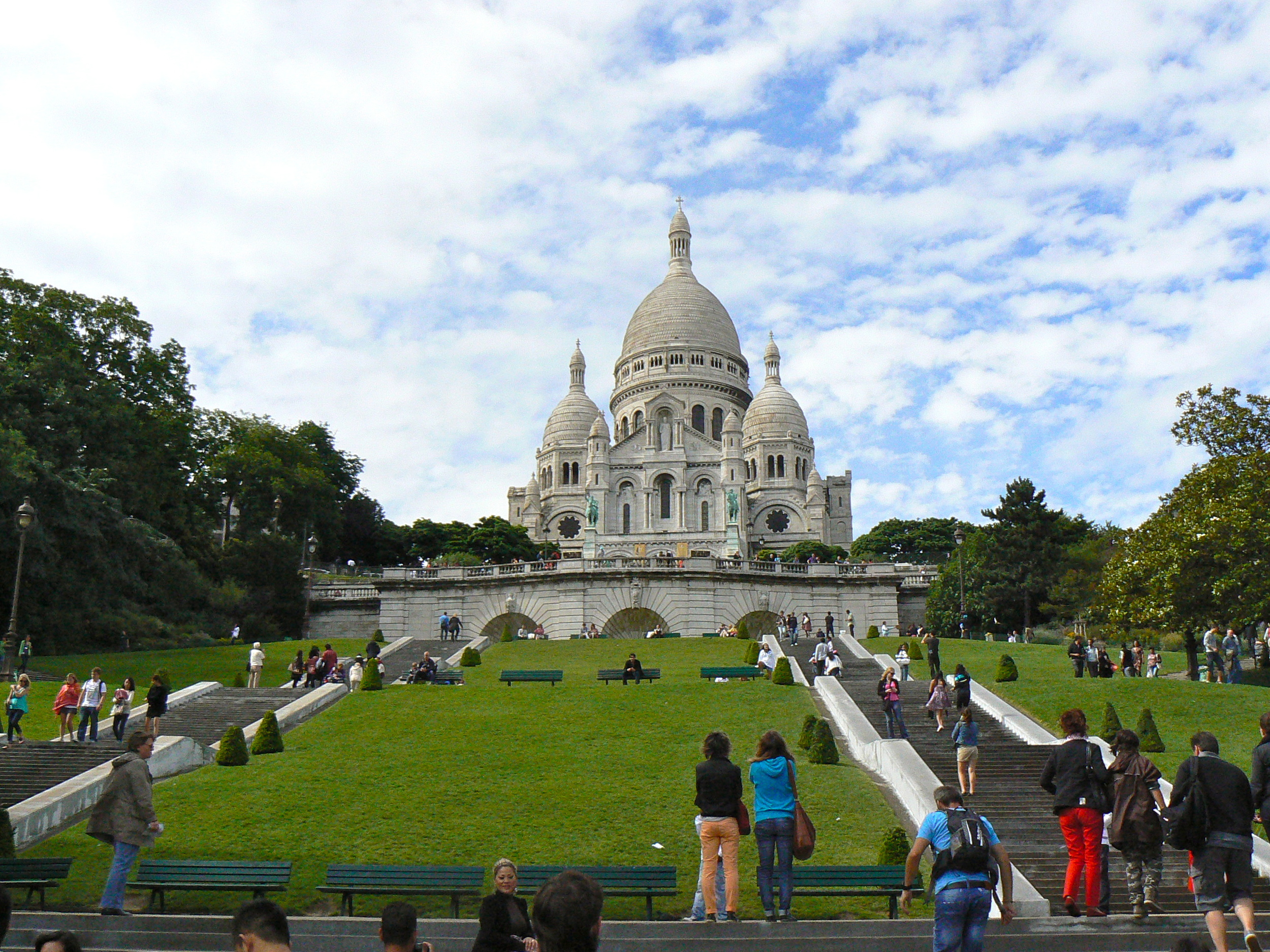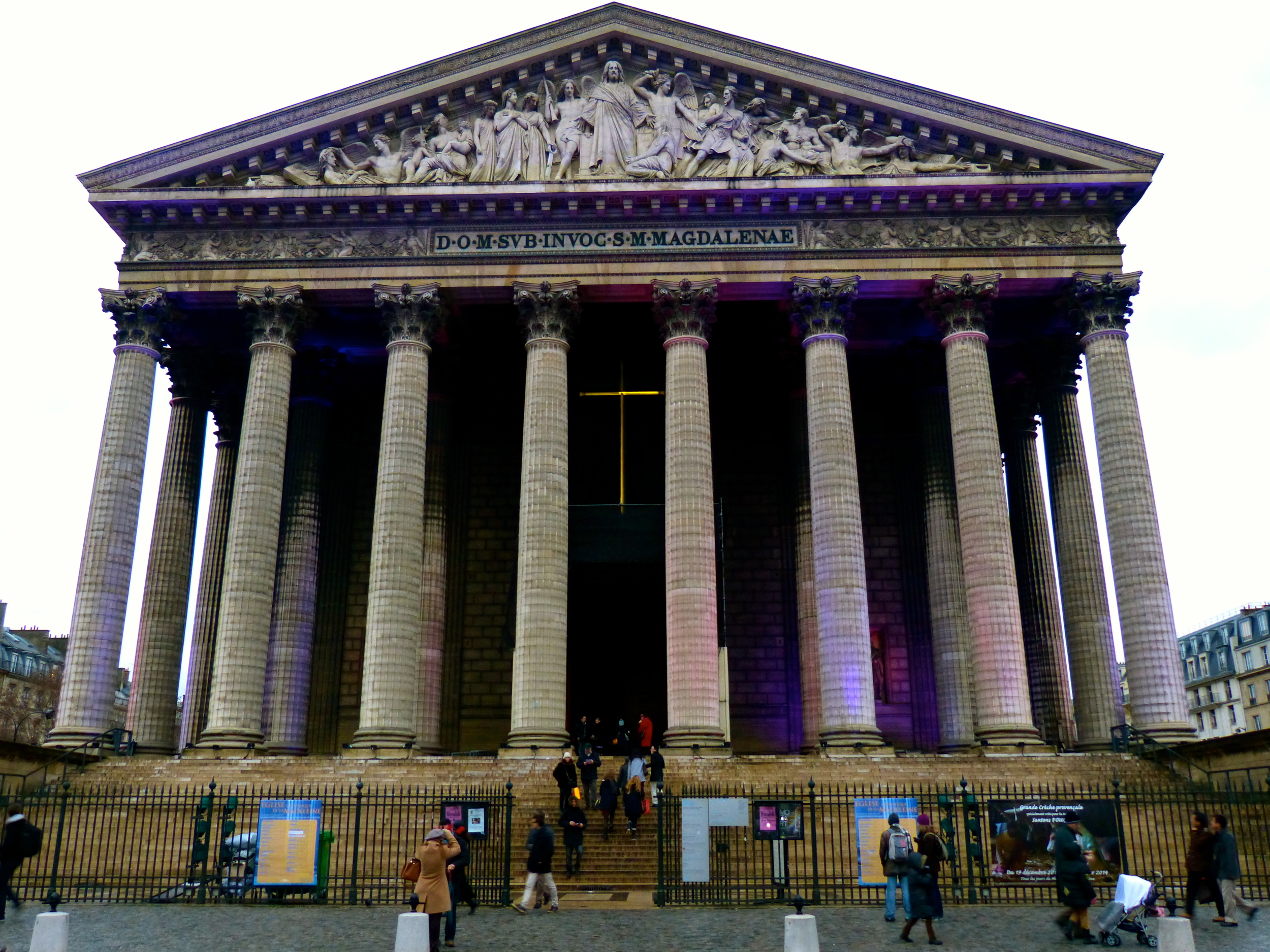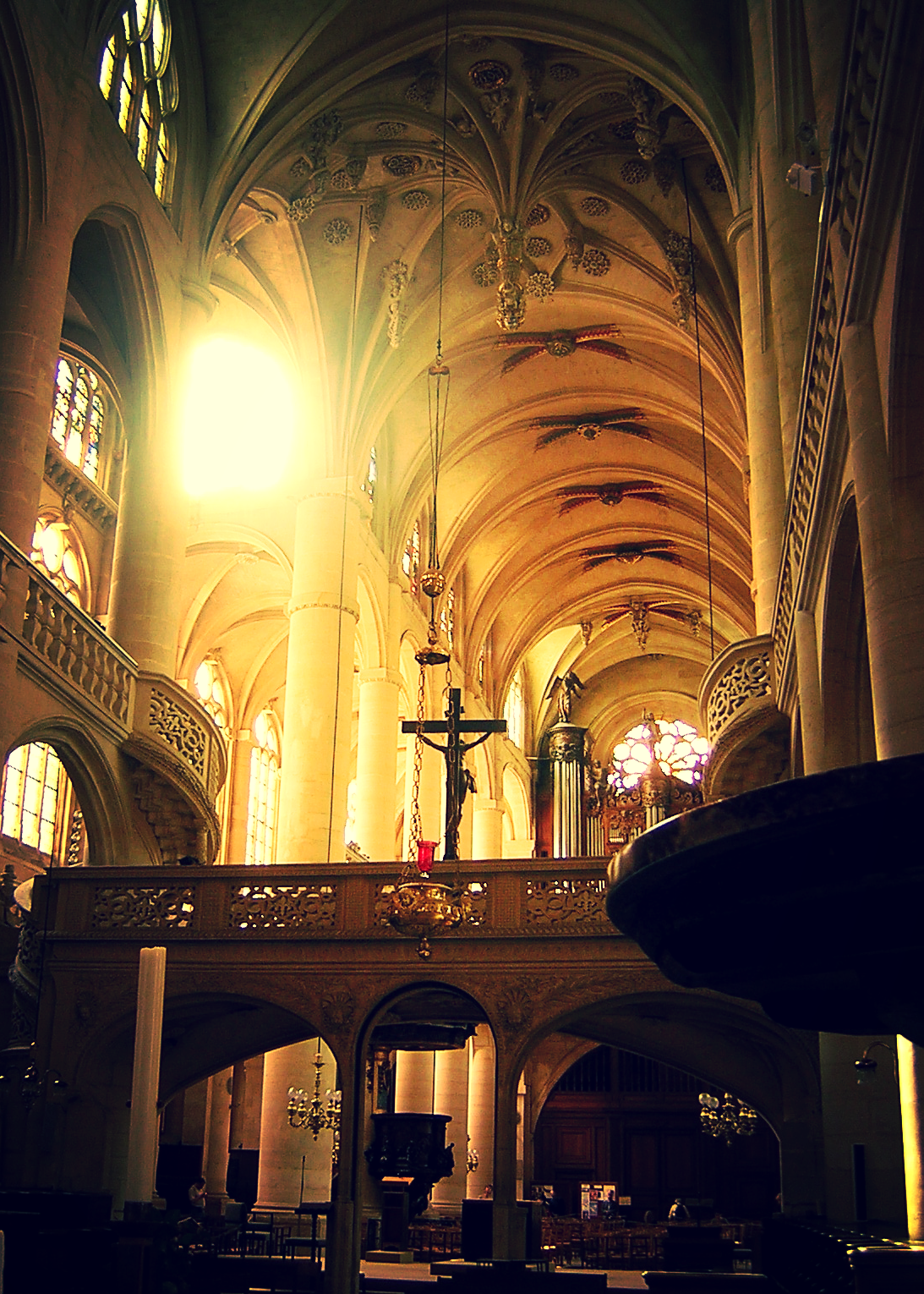The Great and Small Churches of Paris
The Catholic church
has played a central role in the history of France and the city of Paris. Many of these relics of the city's spiritual past were damaged or fell into ruin in the wake of the French Revolution.
Fortunately those buildings that survived would be renovated to preserve their heritage, beauty and architectural significance.
In the years after the unrest of political revolutions there would come a renewal of faith, and with it some modern church structures to inspire.
Statue of Saint Joan of Arc
The Basilica of the Sacred Coeur
Sacré Cœur (sacred heart) crowns the top of the hill Montmartre. This is the highest point in Paris. The Nineteenth century church was designed by the architect Paul Abadie in a Roman-Bysantine style, The foundation stone was laid in 1875. It was intended as a public monument to mark the memory of the many French citizens who lost their lives in the Franco-Prussian war and its aftermath the Commune of 1871.
The basilica was not completed until after 1914 and not officially opened for worship until 1919 after the end of the First World War. The site is traditionally associated with the beheading of the city’s patron, Saint-Denis in the 3rd century. Legend says that upon being slain the bishop Denis picked his severed head and carried it to the top of the hill. The basilica was paid for by national subscription. The great bell tower named the Savoyarde is the heaviest in Europe at 19 tons. Sacré Cœur is built of Chateau-Landon (seine-et-marne) stone, a frost resistant travertine that constantly weathers out its calcite so that it bleaches with age to a chalky whiteness. The mosaic of Christ in the apse is one of the world’s largest.
Basilique Saint - Denis
Located in a northern suburb of Paris this is one of the oldest sites of Christian worship. The former abby and church was the burial place for 43 kings and 32 queens of France. The Basilica built between the 11th and 12th centuries is the first monumental masterpieces of cotter cart it contains a collection of 70 sculpted tombs. This collection of tombs includes that of Louis XVI and Marie-Antoinette
The Church of Saint-Sulpice
Saint-Sulpice Church
It took more than a century and six architects before the monumental St. Sulpice church was completed at the end of the 18th century. The church, located in the heart of Paris's popular 6th, dominates a pleasant square. A masterpiece of classical style that has become a tourist destination due to it being one of the settings in the plot of author Dan Brown's The Da Vinci Code. The church contains a chapel painted by the French artist Eugene Delacroix and the grand organ built by Cavaille-Coll in the 19th century.
Saint-Germain des Pres
The former Benedictine Abbey of Saint-Germain-des-Prés dates back to the 6th century.
The church was originally founded by Childebert to house a relic of the True Cross brought from Spain in 542. In the Middle Ages, the Church of St-Germain-des-Pres was so powerful, both religiously and culturally. The Norman invaders would all but destroy the abbey at least four times. The church would be enlarged and reconsecrated by Pope Alexander III in 1163. Only the church would survive the destruction of the abby on the French revolution. The Chapelle de Saint-Symphorien was a place of burial for Merovingian kings. The remains of Saint-Germain is said to also be among the dead buried below this chapel. Among other interred in this church are Descartes (only his heart), and Jean-Casimir the abdicated king of Poland.
Saint-Eustache
Built between 1532 and 1642 the church sits in the heart of the city. It has served the citizens living and working in Les Halles in the Montorgueil district. The church has an immense organ that counts at least 8000 pipes. This organ was used by the important musicians Franz Listz and Berlioz to compose some of their works.
The Church of the Madeleine
This church was designed in its present form as a temple to the glory of Napoleon’s grand armies based on the design of an antique temple. After the fall of Napoleon, King Louis XVIII determined that the structure would be used as a church. In 1848 the space would finally be consecrated as a place of worship. The facade has 52 Crintian columns supporting the pediment. These are around the entire exterior of the building.
Saint-Etienne du Mont Church
Church of Saint-Etienne du Mond
One of the most beautiful churches in Paris. Originally part of the abbey of Sainte-Genevive, the original church was established in 1222. The current structure was started in 1492 and not dedicated until 1626. The church contains the shrine containing the relics of Sainte-Genevive. A unique structurel feature in the church is a 16th century rood screen. Scenes from the Woody Allen film “Midnight in Paris” were shot on the side stairs of this church.
Church of Saint-Paul-Saint-Louis
This 17th century church is situated in the neighborhood of the Marais. The domed church was built by the Jesuits after a design inspired by that of the Gesù church in Rome. King Louis XIII laid the cornerstone in 1627 and in just 15 years the church was dedicated by Cardinal Richelieu. The church Saint-Paul-Saint-Louis was originally dedicated to one Saint, Saint-Louis. In 1797 the
church of Saint-Paul was demolished and the two parishes were amalgamated.
Val-de-Grâce
This magnificent church was commissioned by King Louis XIII's wife, the queen Anna of Austria. She had this church built out of gratitude for the birth of her firstborn son (who would become King Louis XIV, the Sun King). The domed church, designed by François Mansart and Jacques Lemercier in splendid Baroque style was completed in 1667 after 22 years of construction.
Saint-Séverin
One of the oldest churches in Paris the origins of this church goes back to the 11th century. Much of the beautiful Gothic architecture we see of this structure today is the result of construction done in the 15th century. The church is known for its stained-glass windows. These windows are a mixture of original Gothic windows, 19th century and modern 20th century windows.
Saint-Julian-le-Pauvre
This small Romanesque church was built at the end of the 12th century. It is one of the oldest in Paris and one of the city's twelfth-century paris churches to have endured. During the revolution the church was used as a warehouse. It was reconsecrated in 1826 only to be deconsecrated again in 1877. Finally it was reconsecrated again in 1889 and handed over to Melkites, Byzantine rite Catholics.
Chapel of Our Lady of the Miraculous Medal
The Chapel of the Daughters of Charity was consecrated in Paris on August 6, 1815 and dedicated to the Sacred Heart of Jesus. The building was previously the medieval Hôtel de Châtillon. Saint Catherine Labouré (born Zoe Labouré) felt a call to the monastic life early, and once had a dream of St. Vincent-de-Paul telling her "God has plans for you." On April 21, 1830, at the age of 24, Zoe entered the Daughters of Charity Mother House on the Rue du Bac in Paris. Shortly thereafter, she changed her name to Catherine. St. Catherine soon reported three apparitions of Mary that would lead to a popular new devotion throughout the Catholic Church. The apparitions began on the night of July 18, 1830, just a few months into her monastic life. In the second apparition that again took place in the same chapel. the Virgin appeared near the painting of St. Joseph and showed Catherine the design for what would become known as the "Miraculous Medal." The Virgin Mary instructed St. Catherine, "have a medal struck on this model. All those who carry this will receive Grace in abundance, especially if they wear the medal around their neck and say this prayer confidently, they will receive special protection from the Mother of God and abundant graces." Catherine told the story to her confessor, who at first did not believe her. Later, at her insistence, he took the information to the Archbishop of Paris who in May of 1832 authorized the Medal of the Immaculate Conception, as it was originally known. In February 1831, Sister Catherine left the Daughters of Charity for the Hospice of Enghien, located in a poverty-stricken area of eastern Paris. She served the poor there for the remaining 46 years of her life. When Catherine's body was exhumed in 1933, it was found miraculously preserved. Her incorrupt body now lies on display in the chapel in a glass case. Pope Pius XII named her a Saint on July 27, 1947.




